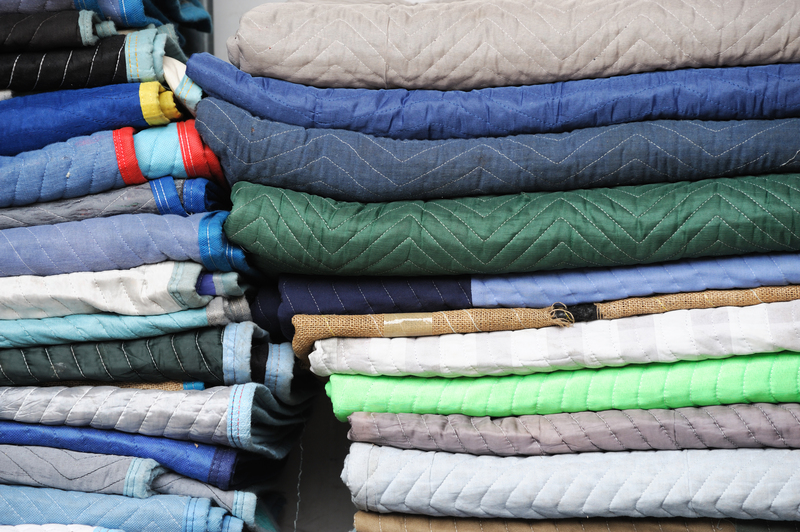Simplifying the Process of Relocating Your Bed and Mattress
Posted on 25/06/2025
Simplifying the Process of Relocating Your Bed and Mattress
Relocating to a new home is an exciting adventure, but the process often comes with its fair share of challenges. Among these, moving heavy and bulky items like your bed and mattress tops the list. Understanding the best practices for relocating your bed and mattress can help you save time, prevent damage, and minimize stress.
In this comprehensive guide, we'll walk you through every step involved in moving your bed and mattress to make your transition as smooth and hassle-free as possible.

Why Focusing on Your Bed and Mattress Matters During a Move
Your bed is one of the most significant investments in your home. Quality mattresses and bed frames can be expensive, and improper handling during a move may result in unnecessary wear, damage, or even replacement costs. **Relocating your mattress and bed** with care ensures you preserve their condition, protect your investment, and achieve a restful first night's sleep in your new space.
Pre-Move Preparation: Planning for a Smooth Relocation
A successful move starts with good planning. If you want to make moving your bed and mattress easy, it's essential to prepare in advance. Here's how:
Assess Your Bed and Mattress
- Review the Manufacturer's Instructions: Some beds and mattresses come with specific recommendations for moving and storage. Check manuals or manufacturer websites for tips.
- Determine Size and Weight: Have a clear understanding of your bed and mattress dimensions and weight. This will help you decide if you need help or particular equipment.
- Check Accessibility: Measure doorways, hallways, and staircases in both your current and new homes. This ensures your bed and mattress can be moved without extra hassle.
Gather Necessary Tools and Packing Supplies
- Mattress bag or protective cover - Shields your mattress from dirt, dust, and moisture.
- Moving blankets - Extra padding to prevent scratches and dents on bed frames.
- Bubble wrap/packing tape - Protects fragile parts and secures wrapping materials.
- Tool set - For disassembling and reassembling the bed frame.
- Furniture dolly/straps - Especially helpful for maneuvering heavy or cumbersome pieces.
How to Prepare Your Bed and Mattress for Moving
Properly preparing your bed and mattress is vital for simplifying your moving process. Here are step-by-step instructions:
Step 1: Strip and Clean
- Remove all bedding, including sheets, pillows, and comforters. Pack these separately in clearly labeled bags or boxes.
- Vacuum the mattress and, if possible, let it air out for a few hours. This ensures freshness upon arrival at your new home.
Step 2: Disassemble the Bed Frame
- Refer to the manufacturer's manual for specific disassembly instructions.
- Start with removing the mattress and box spring.
- Carefully unscrew or detach larger components such as headboards, footboards, and side rails.
- Keep all small hardware (screws, bolts, nuts) in a clearly marked zip-lock bag.
- Tip: Take photos during disassembly to simplify reassembly at the new location.
Step 3: Protect the Mattress Properly
- Insert your mattress into a quality mattress bag or cover. This shields it from dirt, dust, and moisture during transit.
- Seal the bag tightly with packing tape.
Step 4: Wrap and Secure the Bed Frame
- Wrap all bed frame parts in moving blankets or bubble wrap.
- Secure the wrapping with packing tape.
- This prevents scratches, dents, and other damage during transit.
Best Practices for Moving Your Bed and Mattress
Moving the Mattress
- Lifting Techniques: Always lift from your knees, not your back, to prevent injuries.
- Two-Person Job: Mattresses are heavy and hard to control alone. Get a friend or helper for safety and efficiency.
- Folding (If Applicable): Some foam mattresses can be carefully folded or rolled to ease transport. Never bend innerspring or hybrid mattresses unless the manufacturer says it's safe.
- Transport Upright: Keep the mattress upright for easier handling and to save space in the moving truck.
- Secure Placement: Use straps/ties to secure the mattress and prevent sliding in the truck.
Moving the Bed Frame
- Label Components: Label each piece to speed up reassembly and avoid confusion.
- Protect Corners: Use extra bubble wrap or foam padding on sharp edges.
- Stack Carefully: Place bed frame components flat and avoid stacking with heavy boxes on top of them.
Loading and Transporting Your Bed and Mattress
Optimal Loading Techniques
- Load the Mattress Last: Put the mattress into the moving truck just before departure. This makes it easy to unload first and use as padding for other boxes.
- Stand Upright: If space allows, position the mattress on its side against the wall of the truck and secure with straps.
- Bed Parts Flat: Load bed frame components flat in a spot where they won't shift or get crushed by heavier items.
Transport Considerations
- Short Distance: Even for a short move, protect your bedding from dirt and damage by following the steps above.
- Long Distance: Account for weather and humidity. A waterproof mattress cover is vital for longer transits.
- Vehicle Size: For large beds and thick mattresses, ensure that your rental truck or van is large enough. Don't fold or squash items to make them fit.
Unloading and Setting Up in Your New Home
Arriving at your new home is only half the battle. Properly setting up your bed and mattress guarantees you can rest comfortably right away.
Unload with Care
- Prioritize the Bedroom: Bring the mattress in first so you have a clean, flat surface to set up the frame.
- Inspect for Damage: Before reassembling, check all components for signs of transit damage.
Reassemble the Bed Frame
- Follow Instructions or Reference Photos: Use your photos and the manufacturer's manual to reconstruct the bed easily.
- Double Check Fasteners: Ensure all screws and bolts are tightly secured so your bed remains stable.
Install the Mattress
- Remove Cover: Unseal the mattress bag and let your mattress air out for at least 1-2 hours before making the bed.
- Position: Place the mattress on the frame, ensuring it's properly aligned and supported.
Final Touches
- Make the Bed: Add clean sheets, pillows, and comforters for a cozy, inviting space.
- Recycle Packing Materials: Dispose of or recycle bags, wraps, and boxes responsibly.
Special Considerations for Different Types of Beds and Mattresses
Moving King vs. Queen vs. Full Size
King and queen-sized beds and mattresses are more cumbersome than twins or fulls. Be sure to measure all pathways in both locations, and arrange additional help if required. Splitting bases (such as king box springs) into two pieces can make transit easier.
Moving Foam, Hybrid, and Innerspring Mattresses
- Memory Foam: These can be heavier and more flexible than traditional innersprings. Roll if permitted, but avoid crushing.
- Innerspring: Always keep flat or upright. Bending can irreparably damage the springs.
- Hybrid: Refer to manufacturer guidance due to delicate layers and complex construction.
Adjustable Beds
If you have an adjustable bed frame, take extra precautions during disassembly. Secure all electrical components and remotes in a labeled bag, and protect moving parts with bubble wrap.
DIY vs. Professional Moving Services: What's Best for Your Bed and Mattress?
Pros and Cons of DIY
- Cost Savings: Cheaper, especially if you already have helpers and tools.
- Control: You can take extra care with your belongings.
- Effort: Physically demanding and requires proper vehicle and planning.
Benefits of Professional Movers
- Expertise: Experienced movers know how to handle delicate beds and bulky mattresses.
- Equipment: Movers have the right tools and packing materials.
- Insurance: Most professional services offer coverage in case of accidental damage.
- Convenience: Save time and reduce stress during a busy move.
Tip: If you have a high-value or complex bed (like a canopy bed, antique frame, or high-end mattress), hiring professionals for bed and mattress relocation might be the best choice.

Frequently Asked Questions About Bed and Mattress Relocation
- Can I fold my mattress to move it? Most foam mattresses can be rolled or folded briefly, but always check manufacturer guidelines. Never fold an innerspring mattress.
- How should I transport the bed frame? Disassemble if possible, wrap components, label parts, and lay flat in the moving van.
- How do I prevent my mattress from getting dirty? Use a mattress bag or heavy-duty plastic cover, sealing it tightly against dust and moisture.
- How long after moving can I sleep on my mattress? Ideally, let your mattress air out for a few hours to release any odors or moisture gathered during transit.
Conclusion: Make Your Bed and Mattress Move Stress-Free
Simplifying the process of relocating your bed and mattress is all about proper preparation, using the right equipment, and understanding your unique bedding needs. Whether you choose to move your items yourself or hire professional movers, following these optimized steps ensures your bed and mattress reach your new home in top condition.
Investing time in careful disassembly, smart packing, and cautious transport protects your valuable bedding--and empowers you to enjoy a restful night's sleep immediately after moving. Start your new chapter off right by making your bed and mattress relocation as easy as possible!



